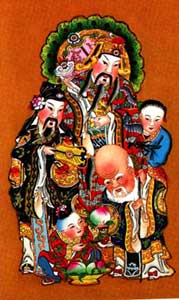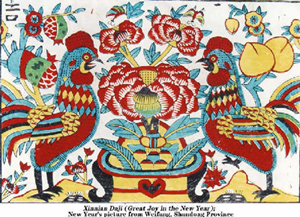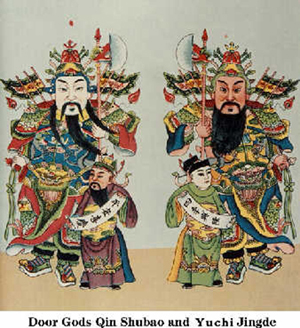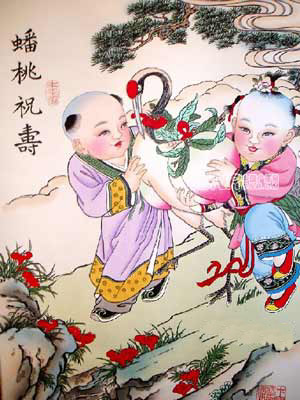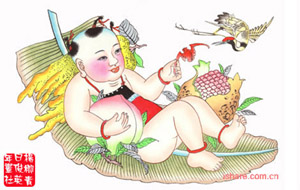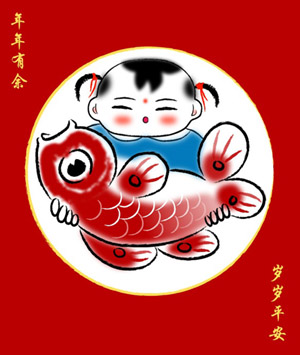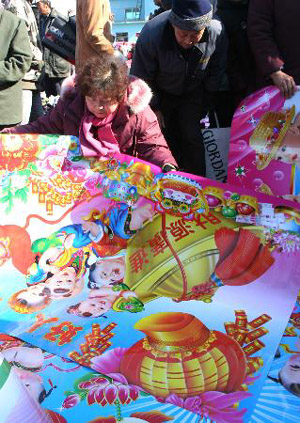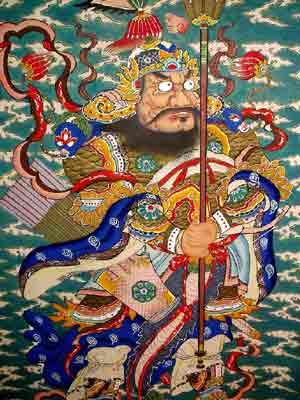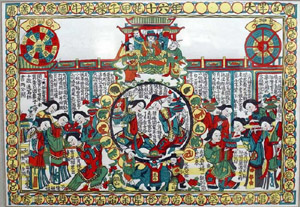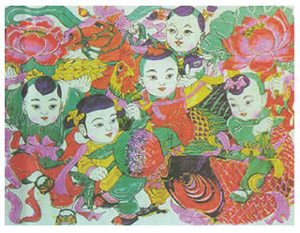| Home / Spring Festival 2007 / Customs | Tools: Save | Print | E-mail | Most Read |
| Nianhua |
| Adjust font size: |
It originated in the Pre-Qin Period (before 221 B.C.), a brief record of which can be found in Zhanguo Ce (Strategies of the Warring States Period). As late as in the Western and Eastern Han Dynasties (206B. C. The art of printing from engraved plates, which was invented in the Tang Dynasty (618 After the Tang Dynasty, some works evolved into more realistic pictures, and the images of the door-gods turned into two generals: Qin Qiong and Yuchi Jingde. There were more nianhua produced in this fashion in the Song Dynasty (960 In the Ming and Qing dynasties, xylographic nianhua reached a new height of development and nianhua came into the homes of the ordinary people. In the Qing Dynasty, most of the provinces had their own workshops for making nianhua. The main producers included Taohuawu of Suzhou, Yangliuqing of Tianjin, Weifang of Shandong, Foshan of Guangdong, Mianzhu of Sichuan, Wuqiang of Hebei, Zhu-xianzhen of Henan, Shaoxing of Zhejiang, and so on. Judging from their development, there are two schools of nianhua: the southern school and the northern school. The representatives of the northern school are those from Yangliu-qing of Tianjin and Weifang of Shandong. Nianhua produced in Yangliuqing originated in the late Ming Dynasty and reached its peak in the Qing Dynasty. The subjects were mainly images from traditional operas, fat and healthy babies, and fairy New-Year celebrations. A rich composition and refined drawing style showed its artistic characteristics. Nianhua produced in Weifang mainly dealt with fairy tales, legends, and auspicious designs. A style of simplicity, with bold and vigorous lines and bright colors, showed its characteristics. The most famous nianhua of the southern school were those from Taohuawu of Suzhou and Foshan of Guangdong. Both originated in the Ming Dynasty and reached their peaks in the reigns of Emperor Yongzheng and Emperor Qianlong of the Qing Dynasty (1723
(China.org.cn February 13, 2007) |
| Tools: Save | Print | E-mail | Most Read |
 |
| Related Stories |
